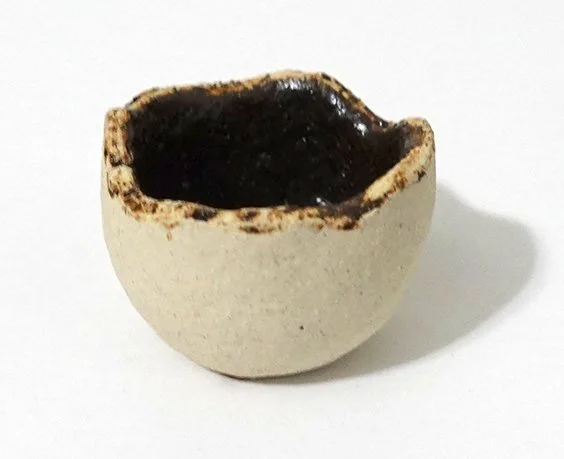While I was in Japan this summer, I visited a number of important ceramic-production locations (Shigaraki, Imari, Arita, and Karatsu). I’d wanted to make ceramics during my first Arts Itoya residency, but the firing timings did not align with a one-month stay; for my second I was there for even less time due to my Kyoto solo show so I knew it couldn’t happen.
However, on this second trip I bought a small quantity of Shigaraki clay (Shigaraki is one of the six ancient kilns of Japan) and gathered volcanic ash (with the permission of my tour guide) outside of a shrine on Mount Aso. I brought these materials back with me, and made a couple of pieces!
My hope had been that the Shigaraki clay I purchased had the feldspar inclusions that lead to a sort of blistered, weeping surface; those descriptors don’t sound particularly aesthetically compelling but I really like the unique finish. However this didn’t happen with the clay I bought. It could potentially be due to how I fired it (Cone 6 electric), but from its pre-fired texture, I don’t think it had those inclusions in it to begin with. Though that was a disappointment, I am still happy with the resulting pieces.
I made a medium-sized bowl and a very small bowl, and the images below depict them individually as well as together for a better sense of scale. They are site-specific to Japan and materially meaningful!


















